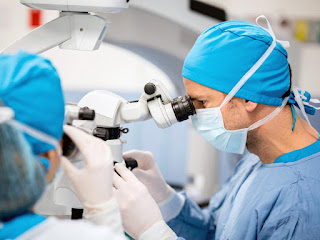Prominent protuberances: A peep over corneal striae

A 4-year-old man showed recent binocular (BE) visual impairment, pain, and redness. He had been taking topical steroids for two years because of allergic conjunctivitis. On the test, uncorrected visual acuity was 20/120 and 20/200 for the right eye (RE) and left eye (LE), respectively. BE SLE showed conjunctival congestion and upper tarsal papillae. Corneal findings of microcystic epithelium and interstitial edema (LE> RE) were recorded with horizontal muscle and posterior corneal pigmented bands. The fundus showed almost perfect cupping in BE. BE's IOP was 32mmHg. The child was born by caesarean section at maturity, with a history of benign birth and development. The expression was asymmetrical. The keratometry value does not indicate the inclination of the cornea. Front eye optical coherence tomography (ASOCT) of RE showed hyperreflexive Descemet's membrane (DM) with prominent endothelial protrusions, and the left eye showed local stromal thickening with endothelial protr...





